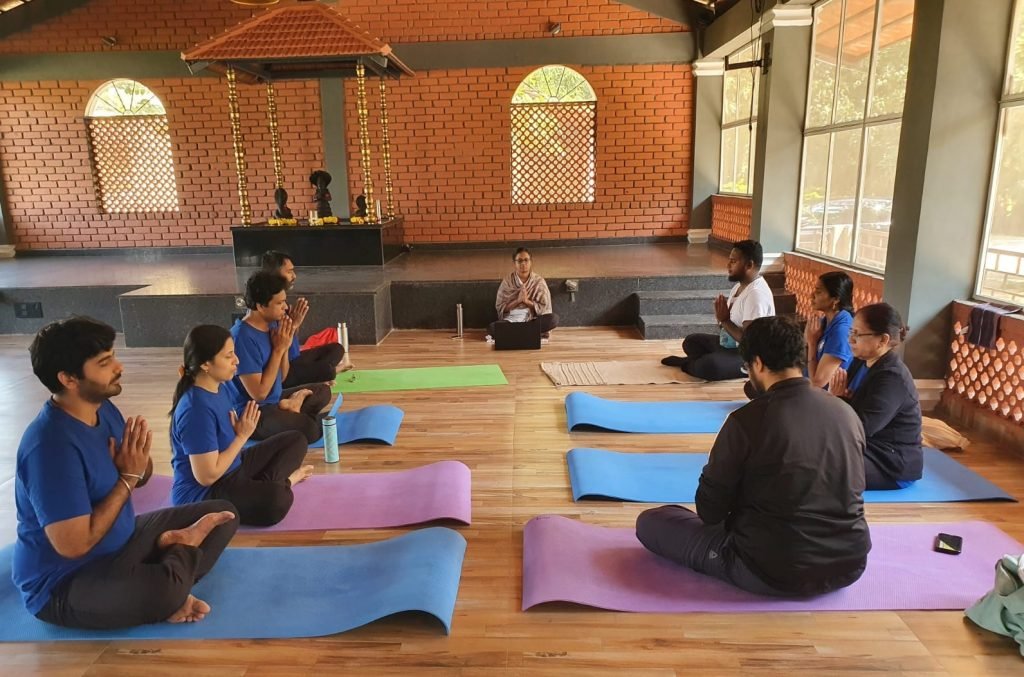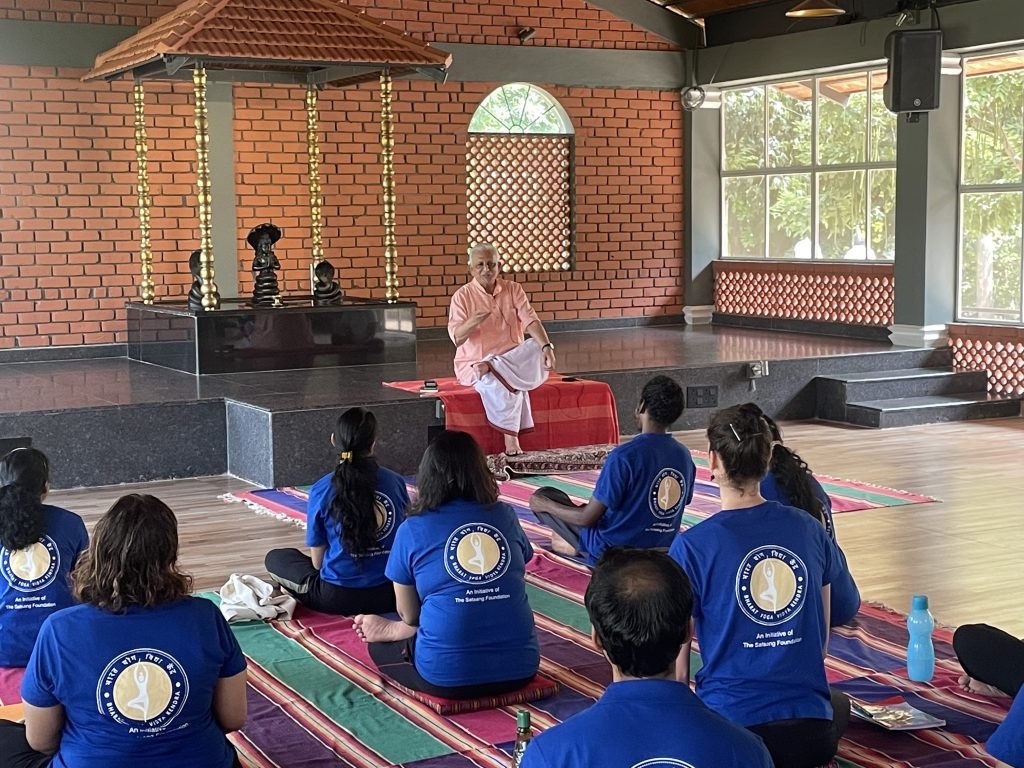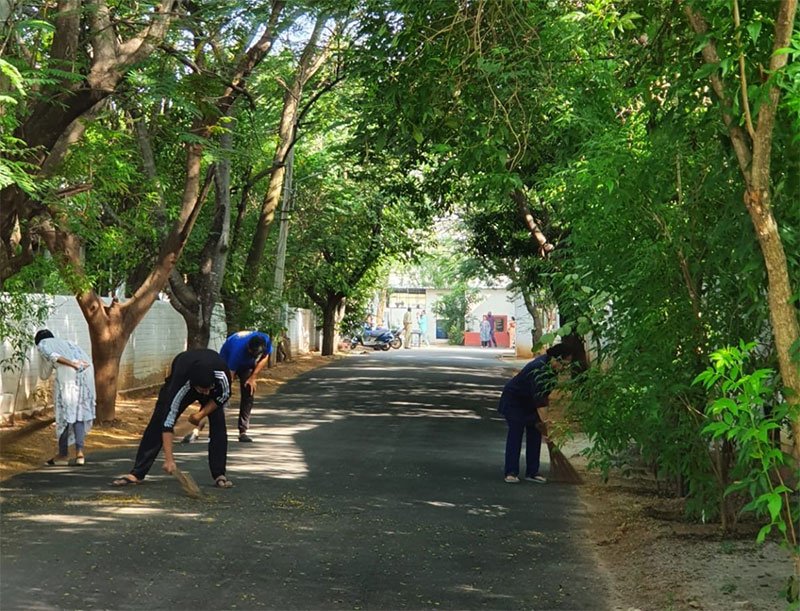Yoga Sutras of Patanjali is the most ancient and authoritative text on the Science of Yoga. According to the text, the aim of Yoga is “Chitta vritti nirodah” or the complete cessation of the fluctuations and movement of the mind stuff or chitta. In order to get there, Patanjali, considered the foremost and earliest exponent of systematic Yoga, has laid down a step by step approach in the Yoga Sutras, which are the eight limbs or ashta angas of this Science.
The first two steps, Yama and Niyama, are the foundation of the ashta angas of Yoga. Similar to other sciences like physics and chemistry where one follows rules and regulations in order to get desired results, Yama Niyamas perform the same role in the Science of Yoga.
The desired result, or the culmination of the practice of Yoga, and the eighth anga, is Samadhi. An ordinary mind which cannot distinguish between the real and the unreal cannot experience the pure trans state (the state of Samadhi) which is required to know the Purusha (the Truth or Brahman according to Vedanta). By the practice of Yama and Niyama, the practitioner’s mind can be purified and made subtle, as the beginning of all practices is the mental preparation, to be followed later by the physical steps, or Asanas.
Yamas can be loosely translated as restraints and Niyamas as observances that one has to follow in order to begin the practice.
The five Yamas are Ahimsa, Satya, Asteya, Brahmacharya and Aparigraha, relating both to the physical as well as the mental plane.
Ahimsa or non-violence, non-injury to all living beings, is the first Yama. Most often, non-violence is considered as an act applicable only on the physical plane. However, Ahimsa can happen only when one minutely studies violence or himsa in one’s own nature under different circumstances in the world. Conflicting thoughts, anger, having a strong dislike for something or someone are all forms of violence or himsa. Until one recognizes the subtle ways in which we exhibit himsa in our day to day life, we will not be able to move towards Ahimsa.
Satya or truth is the second Yama. If one is aiming to find the absolute Truth, then one must abide by the truth in all activities of their life. Like non-violence, truth should be practised in the mental plane, in our thoughts first, so that it naturally gets translated into our speech and action.
Asteya or non-stealing is the third yama. Stealing or coveting, is detrimental to the very path of Yoga. When one wants something that belongs to someone else, that itself becomes an act of stealing. In order to move towards Asteya, it is best to understand that the world is for everyone to enjoy and not specially for us to own or possess. This will lead us naturally to be grateful, and automatically reduce the urge to covet.
Brahmacharya or sexual restraint is the fourth yama. Sexual energy is a tremendous force that can be harnessed to reach higher and subtler realms. By disciplining one’s mind, this creative force comes under the control of the practitioner of Yoga. This can then be used to understand Truth or Brahman, seamlessly transforming human to the divine being he/she really is.
Aprigraha or non-possession is the last or the fifth yama. It can be practiced by developing an understanding of the ephemeral nature of all our possessions including our body that will anyway, by its very nature, not be with us forever. This thought liberates us from attachment, and helps us simplify our life to only the basic necessities.
Niyamas or observances include Sauca, Santosha, Tapah, Svadhaya and Ishwara Pranidhana.
Sauca means purity and cleanliness. On the mental plane it means to refrain from having hatred or ill will towards anyone.
Santosha can be translated as contentment. A cheerful mind comes from a mind devoid of distractions, resting in the Purusha, and a deep understanding of the oneness of the world and the beings in it.
Tapah or austerity is derived from the Sanskrit word meaning heat. The fire of austere practices moves our actions towards the desired goal of Samadhi, by destroying all our impurities. It then ignites the fire of desire to find the Truth and hence all our actions towards the fulfilment of that desire becomes Tapasya.
Svadhaya is the study of one’s self, nature and dealings with world. It also includes the study of scriptures.
Ishwara Pranidhana is dedication or one-pointed attention to Ishwara (or Purusha according to Yoga). This last Niyama, eases the mind completely into Samadhi.
Faithful adherence to the Yama Niyamas, leads the practitioner towards the desired goal. With lifestyle changes and constant practise, one is prepared to receive the grace to advance on the spiritual path.
Sri M stresses upon the importance of the purity of mind and the practice of Yama Niyamas in all residential courses when he interacts with the students. Through various activities like karma yoga, group discussions and silent walks, the students get an opportunity to observe themselves and put the theoretical aspects of Yama Niyamas into practice.
The understanding and practice of the Yama Niyamas form the base of all the courses conducted by Bharat Yoga Vidya Kendra (BYVK). Be it online or residential courses, the first and foremost thing that is discussed are these. Through open dialogues between the teacher and students and group discussions amongst the students, an avenue to develop the right understanding is provided.





